Looking for a stunning addition to your garden that is easy to care for?
Look no further, the Japanese Iris (Iris ensata) is the perfect choice and it is available in a range of breathtaking colors and shapes.
Colors from delicate whites to soft blues and striking purples, paired with beautiful green foliage.
Once planted in the appropriate conditions, this plant is relatively simple to care for.
As long as you are able to learn when and where to plant the Japanese Iris, you will be rewarded with full, luxurious blooms.
Small setbacks like petals losing their color may occur, but there is no need to panic.
There are a few reasons this may happen, but this can easily be solved by monitoring the temperature changes, chemical drift, or even propagation or transplant issues.
Not to worry, here is a full guide to help you get the best out of your Japanese Irises.
Japanese Iris Care
To care for Japanese Iris place them in humus-rich soil that retains water well or directly it 3 inches deep standing water. Provide full sun in colder and partial sun in warmer climates. Water so the soil remains moist or plant Japanese Iris alongside the water. Keep the roots dry in winter. The ideal temperature is between 20-70 degrees Fahrenheit (-7-21 degrees Celsius).
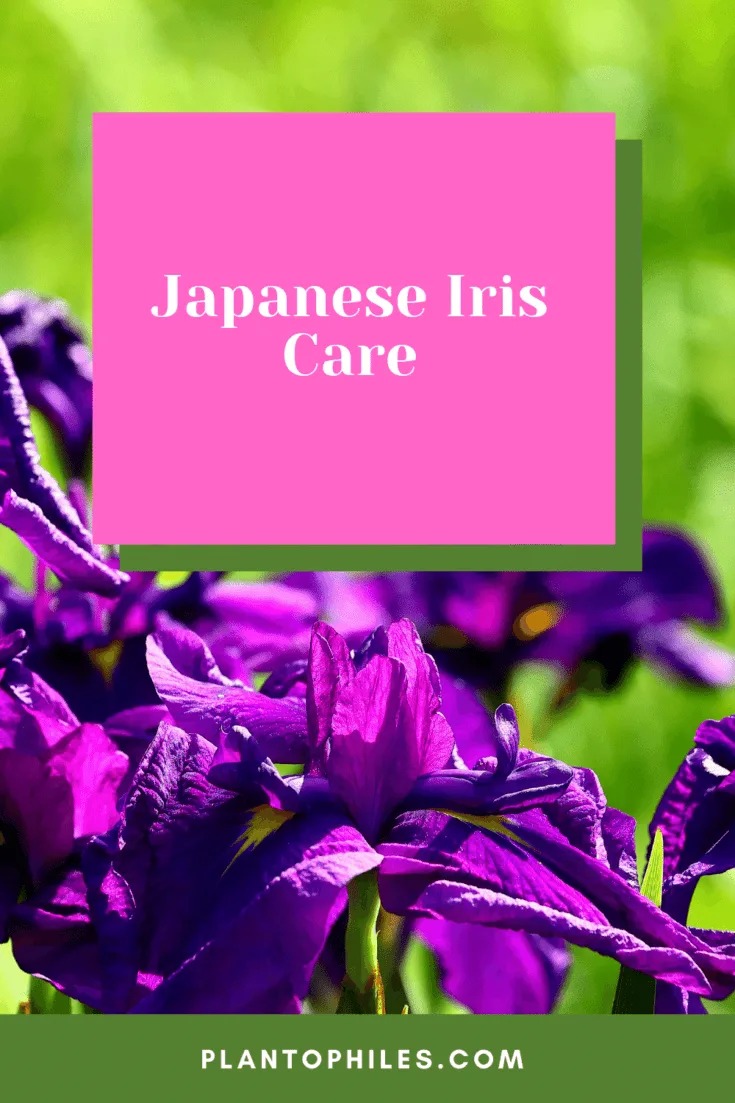
Japanese Iris Care
Japanese Iris Care Guide
Soil
Place Japanese Iris in humus-rich moist soil. They can also stay directly in water up to 3 inches deep.
According to Cornell University, the Japanese iris requires acidic and damp soil.
The most important factor to consider is the moisture levels when it comes to soil.
These beauties love moisture, so use soil that retains moisture well.
During the growing season, the Japanese Iris does best in standing water, planted approximately three inches deep.
During winter, however, these conditions need to be changed.
The drier ground is necessary for the colder seasons (Fall-Winter).
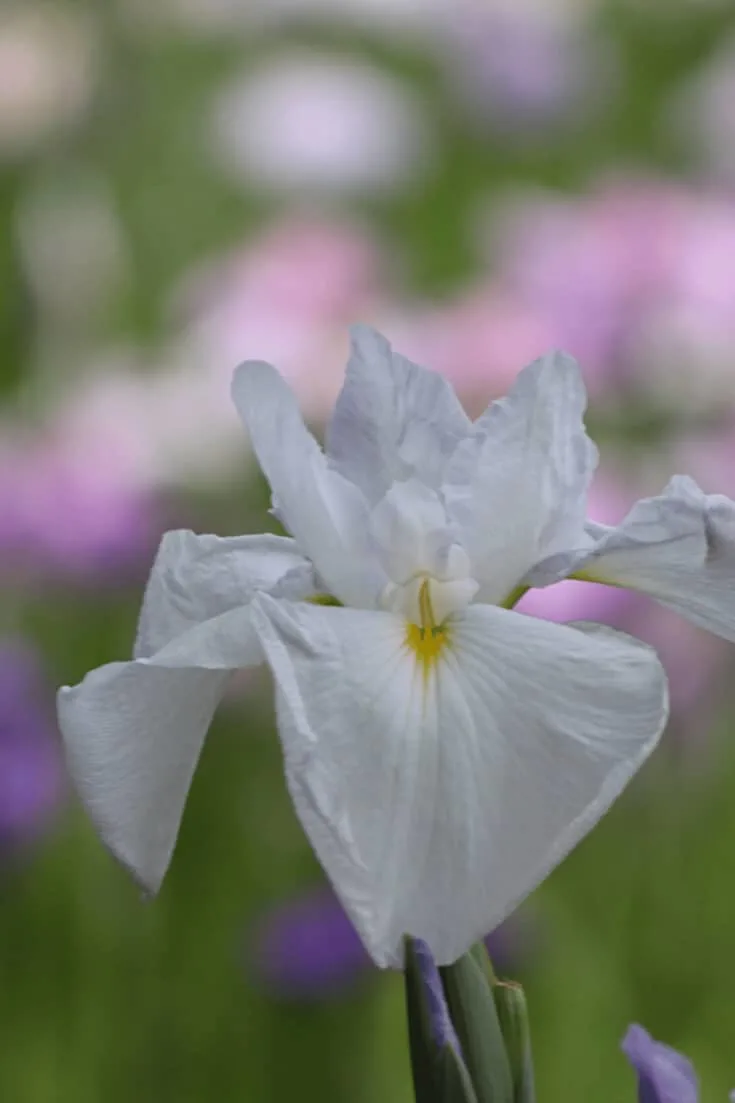
Humus rich, acidic soil that is constantly damp is best for Japanese Iris
Roots
The roots of the Japanese Iris have the ability to produce substances that create conditions inhibiting the growth of other plants, including other irises.
The roots also tend to clump together, inhibiting their own growth and even reducing the number of flowers.
This can easily be solved by digging these plants up every 3 to 4 years.
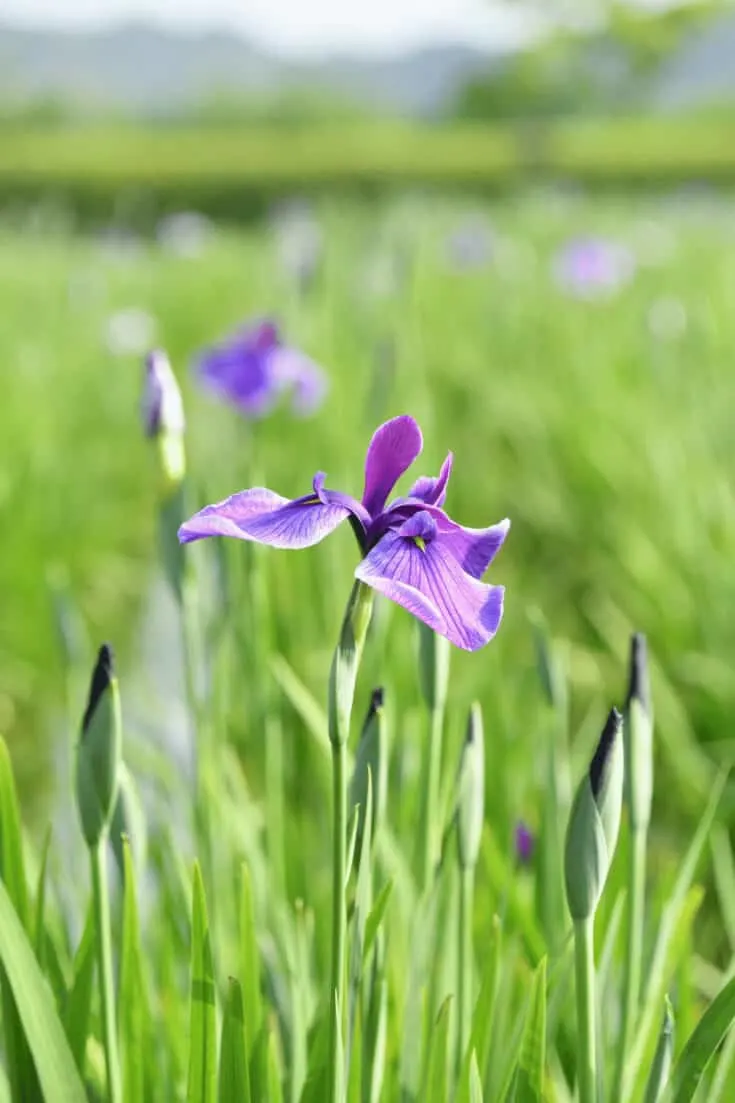
Japanese Iris needs damp soil
Light
Japanese Iris thoroughly enjoys full sun to partly shaded areas.
For zones with relatively cool temperatures, full sun is ideal.
However, in warmer climates, Japanese Irises need protection with light shade, especially during the parts of the day that are the hottest.
Watering
Provide Japanese Iris with sufficient water so the soil remains constantly moist.
Remember that sufficient moisture is the main requirement for this plant.
To get the best out of your Japanese Irises, supply it with the moisture it craves.
When growing in their natural habitat in Japan, these plants thrive growing alongside bodies of water like streams or ponds.
A good option to consider is placing them at the base of areas that collect water or downspouts.
When rainfall creates soggy conditions, this is a perfect position for these plants.
For traditional planting beds, however, ensure that the soil is constantly being well-watered.
This plant responds to sufficient watering with stunning blooms and healthy growth.
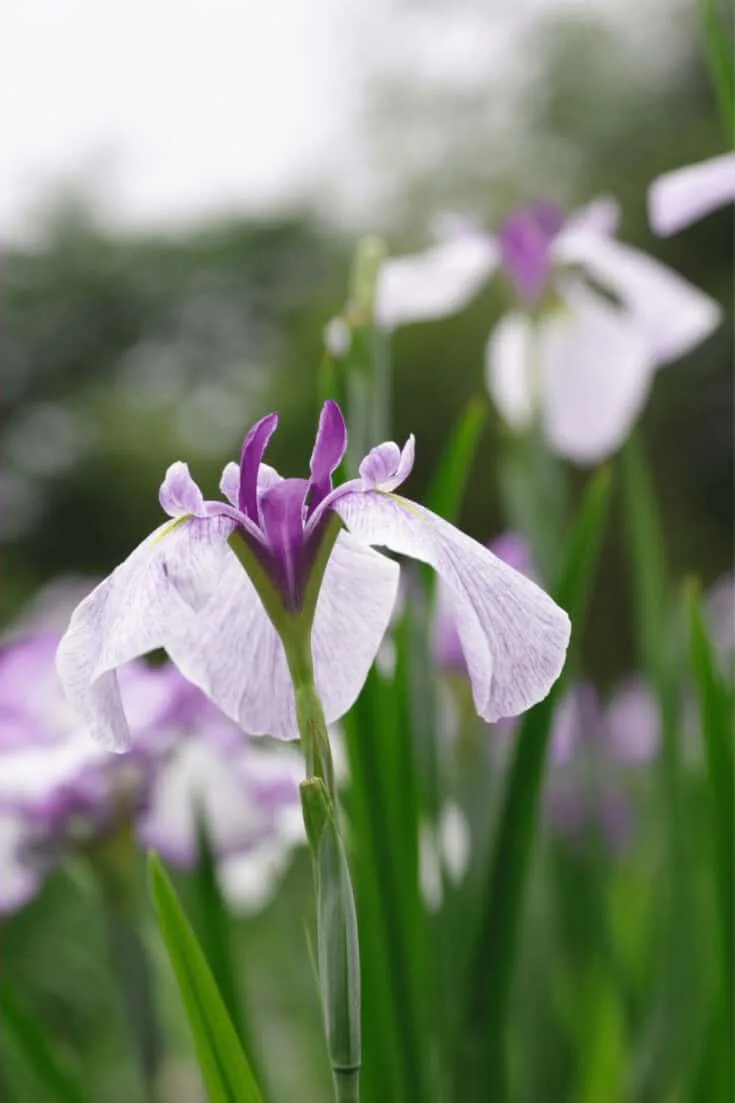
The roots of Japanese Iris need to stay dry in winter
Temperature
The ideal temperature for Japanese Iris is between 20-70 degrees Fahrenheit (-7-21 degrees Celsius).
Aside from sufficient watering, this plant enjoys sunlight and warmth but can survive during colder seasons as well.
Keep in mind that potting conditions need proper monitoring (as seen above) during fall and winter.
Proper sunlight and dry roots are the secrets to keeping them alive and happy for those colder seasons.
Fertilizer
For Japanese Iris use a balanced fertilizer such as NPK 12-12-12 once a month in spring and summer.
Japanese Irises have a healthy appetite when it comes to nutrients.
Experts refer to them as “heavy feeders”.
This simply means to ensure that the soil in which you plant them is nutrient-rich.
Specifically for plants that require moisture-rich soil more nitrogen is needed.
In addition to this, these plants adore soil rich in acid.
For the best results, especially during springtime a generous amount of Ammonium sulfate guarantees rich blooms.
We suggest using a balanced fertilizer for Irises, such as 12-12-12 for the best results.
Propagation
Japanese Iris can be propagated by dividing the rhizomes from the middle of summer to right before fall.
Planting for these rhizomes needs to be two to three inches in terms of depth and six to eight inches in terms of distance apart.
If other rhizomes (different species) are close by, ensure that they have a sufficient spacing of eighteen (18) to twenty-four (24) inches.
This is due to the production of plant inhibiting substances and clumping (seen above).
For root development to occur never let the roots dry out.
Water well, this may mean daily watering during the early stages for the first couple of weeks.
Remember to groom this plant well, removing any dying leaves or other foliage.
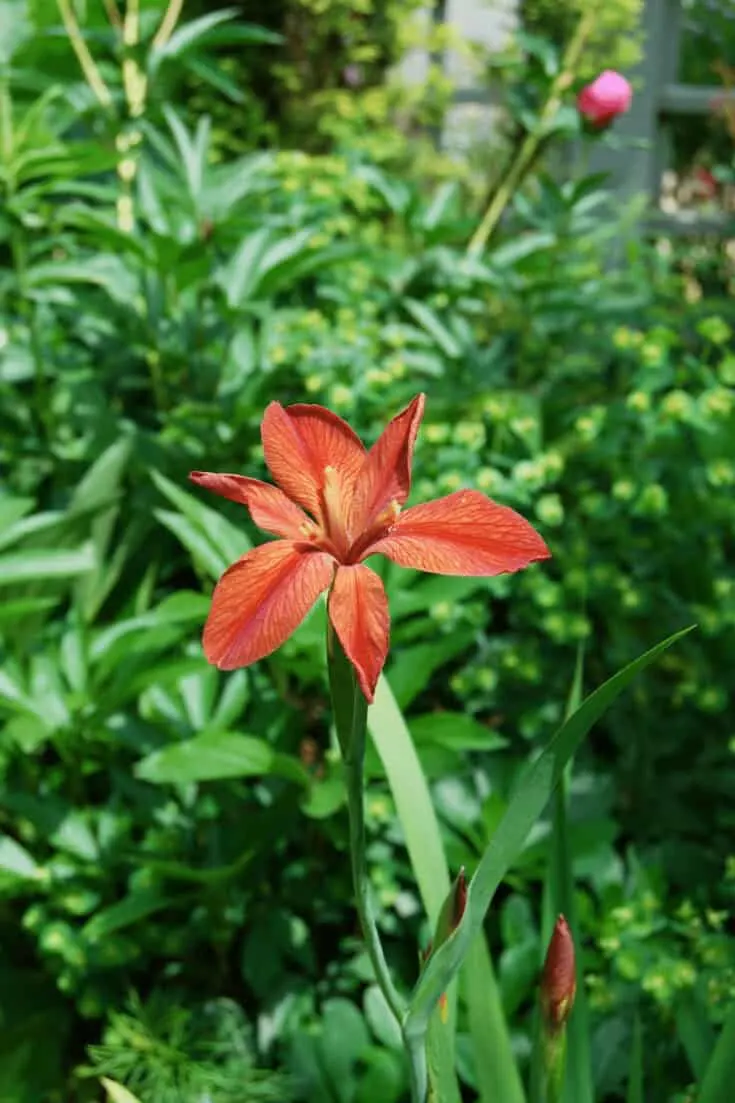
Japanese Iris can be propagated through rhizome divisions
Growth
The Japanese Iris grows to beautiful heights making it the tallest of its kind among Iris plants as it can reach up to 48 inches (122cm).
These plants reach up to twenty-four to forty-eight inches in height and about eighteen to twenty-four inches in width (46-61cm).
Their leaves are sword-shaped and linear, green in color with noticeable midribs adding texture to this stunning presentation.
The leaves stretch up to twenty-four inches (61cm).
Its beautiful, color-rich flowers typically bloom up to two to three inches in size (5-7.6cm) and are flat in appearance.
There are different forms in which the blooms are produced.
They can present in either single or double petal formations or even peony flowered forms.
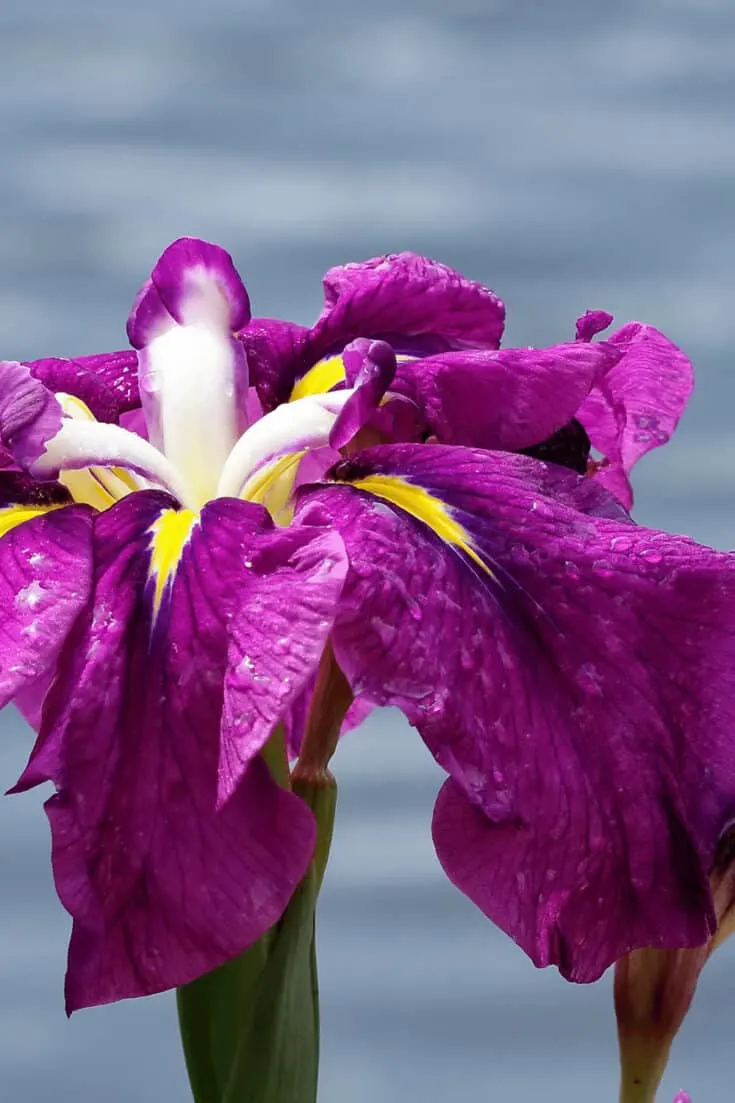
Japanese Iris often grows alongside water
Planting
When planting Japanese Iris always consider the following:
- These plants survive well in nutrient-rich, well-moisturized soil except during colder seasons.
- Sufficient sunlight is required regardless of season.
- When potting, to avoid shock or transfer of diseases, always soak the roots of new plants in water before potting.
The plant’s roots must be tucked into the soil, three inches deep, slightly fanning them out to ensure proper growth.
It is important to note that the junction between the fanning and where the roots begin must be at least one (1) inch.
Then firmly pat the soil around the plant, securing it in place. Remember to space them out when planting multiple clumps.
After successfully potting them, ensure that the soil receives a good soaking.
A good way to avoid winter heaving, add mulch to your irises after you are finished planting.
Suitable potting
Aside from growing the Japanese Iris in the ground, these can also be placed in pots.
Their tall and slender physical features require large containers.
Some experts say that it is easier to monitor the moisture levels of this plant by placing them in containers.
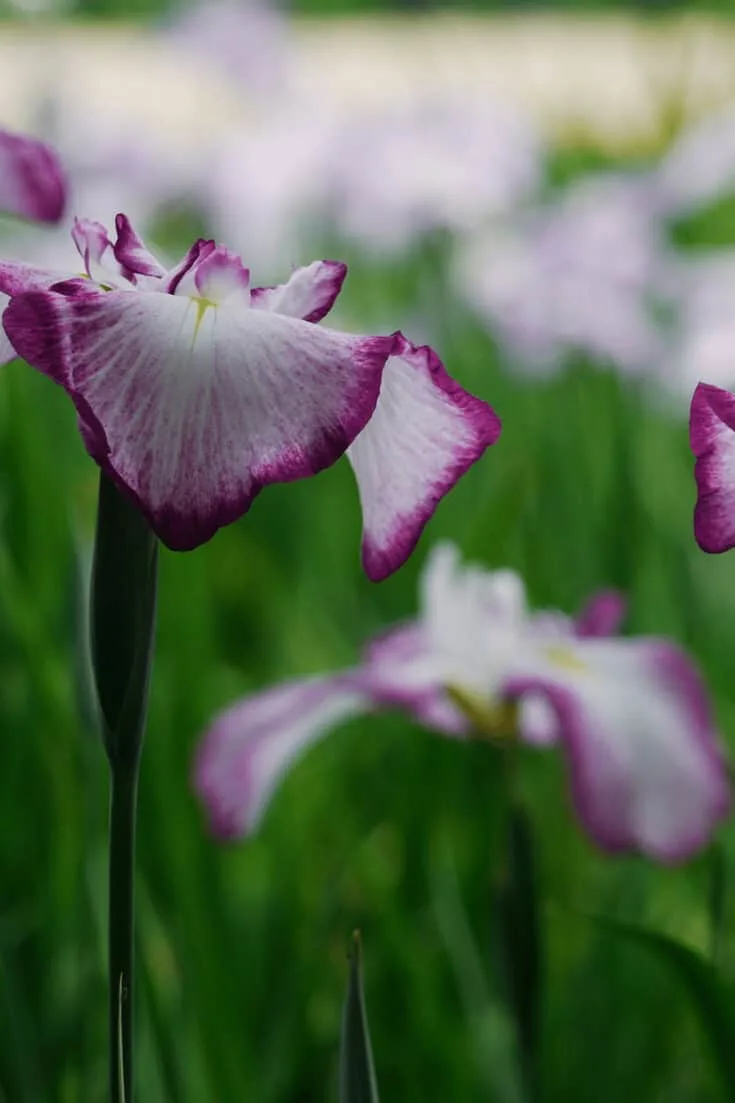
Japanese Iris need to be watered regularly so the soil remains damp
Seasonal Care
Japanese Irises are able to survive all year round however only fully bloom during early Spring to early Summer.
During this time, remember to provide sufficient sunlight. Direct sunlight for cooler days and light shading during the hotter days.
Plants may also require relocating during the hottest parts of the day.
A simple solution is to position them where the midday sun is blocked but let them soak up the lighter rays of the morning sunlight.
Tempted by the stunning flowers your iris produces? Luckily enough, this plant is not affected negatively by snipping.
Feel free to gather some of your irises and create a stunning bouquet! However, ensure that the foliage is kept in place.
The leaves are important for collecting sunlight for the plant to “feed” through photosynthesis.
As fall arrives and winter approaches, the leaves will begin to change in color and shed. This is no need for alarm. The plant will be entering dormancy.
Remove any dead foliage and let your Iris rest up.
It is very important to note that during wintertime, this plant’s roots need to be kept dry to prevent winter heaving.
In just a few months, as Spring approaches the new cycle will begin.
For those lucky enough to live in warmer climates, Japanese Irises can stay green all year round!
Pests
Once the soil is sufficiently watered and sunlight is present this plant is relatively safe.
By producing substances that prevent the growth of other plants, weeds, and invasive plants will have a hard time.
Pests however are still an issue. The regular slugs and snails will attempt to overrun and destroy your plants.
Use bait if you begin to see damage to your irises. Regular Iris problems such as thrips and Iris borer can be treated as normal with a safe insecticide.
In conclusion, the Japanese Iris is beautiful and easy to care for addition to your garden.
Those with previous gardening experience will be able to care for these with great ease.
New gardeners, with careful research on general plant care, will also be able to benefit from these stunning plants.
Frequently Asked Questions About Japanese Iris Care
Do Japanese Iris need full sun?
This plant enjoys sunlight and warmth. Provide full sunlight exposure to partial shade depending on the time of year and your location.
How long do Japanese Iris bloom?
Total blooming time is about two weeks for these plants. Blooming starts from around early Spring to early Summer. Luckily the beautiful flowers can be snipped, causing no harm to the plant itself.
Why is my Japanese Iris not blooming?
Aside from the dormancy period during fall and winter, another reason your plant may not be blooming could be insufficient nutrients. Read through this article carefully to ensure that you meet all of the care requirements.
Can Japanese Iris grow in water?
Unlike most plants, well-drained soil is not the best for this plant. These plants flourish in areas that are soggy except during dormancy periods. While they do not grow directly in water, their natural habitat is around the banks of ponds and streams.

Daniel has been a plant enthusiast for over 20 years. He owns hundreds of houseplants and prepares for the chili growing seasons yearly with great anticipation. His favorite plants are plant species in the Araceae family, such as Monstera, Philodendron, and Anthurium. He also loves gardening and is growing hot peppers, tomatoes, and many more vegetables.


